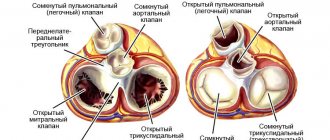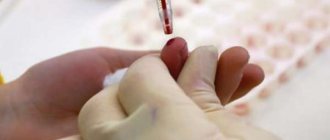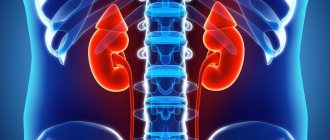Anisocytosis is a pathological change in the size of red blood cells and platelets that occurs against the background of various human diseases. Anisocytosis of mixed type is more often diagnosed in medical practice. Blood is the internal medium of the body and performs an important function, providing all organs and systems with oxygen and nutrients. Changes in the shape and size of the cells of this substance often indicate the development of serious diseases, but additional medical research is required to clarify the diagnosis.
Disease concept
What does anisocytosis mean and what is it? Normal red blood cells that make up the blood are called normocytes. In a healthy person, the size of these cells corresponds to 7–7.5 microns. The diameter of microcytes is 6.9 microns. The size of megalocytes is 12 microns, macrocytes – 8 microns. As a percentage, the number of normocytes occupies about 70% of the blood volume, respectively, the number of macrocytes and microcytes should be up to 15%. Violation of this ratio indicates the development of anisocytosis.
The symptoms of the disease are similar to anemia and heart failure. The patient feels weakness, decreased performance, and gets tired quickly. Palpitations, shortness of breath and other symptoms often occur.
Important! Anisocytosis is often asymptomatic and is detected during a blood test during routine examinations.
Anisocytosis (micro-slight, moderate, mixed type), what is it - Medical confidentiality
https://www.kakprosto.ru/kak-837275-chto-takoe-anizocitoz-
Blood is formed from plasma (the liquid part) and the elements it contains (leukocytes, erythrocytes, platelets). During a blood test, special attention is paid to the number and size of cells.
The main purpose of red blood cells is to transport oxygen to organ tissues. This is a very important mission, therefore any pathologies accompanied by changes in cells (for example, changes in size - anisocytosis) cause severe disorders throughout the body.
Characteristics of anisocytosis, their types
Red blood cells can have different diameters.
| Name | Diameter (µm) |
| Normocytes | 7 — 8 |
| Macrocytes | 8 — 12 |
| Megacytes | > 12 |
| Microcytes |
A healthy person has red blood cells of all sizes. But a violation of their ratio is a pathology.
The proportion of normocytes should be 70% of the total volume. The volume of microcytes and macrocytes takes up no more than 15% separately.
https://pixabay.com/illustrations/heart-red-blood-cells-erythrocyte-2176218/
Classification of anisocytosis
Erythrocyte anisocytosis is divided into several categories.
Based on the size of the predominant cells, they are distinguished:
- Macrocytosis – increased number of macrocytes. When red blood cells are too large, there are fewer of them than needed and they carry less hemoglobin. This means that the blood is not sufficiently rich in oxygen. Low blood oxygen saturation causes a variety of symptoms and health problems.
- Microcytosis – the number of microcytes significantly exceeds the norm. Small red blood cells have a weak ability to carry oxygen, since they have a low concentration of hemoglobin.
- Mixed variant – increased number of macrocytes and microcytes.
Depending on the severity, the following types of anisocytosis are distinguished:
| Name | Designation in analyzes | Proportion of red blood cells with abnormal size (%) |
| Minor | + | 25 |
| Moderate | ++ | ≈ 50 |
| Expressed | +++ | ≈ 70 – 75 |
| Pronounced | ++++ | ≈ 100 |
Vitamin B12 deficiency
Vitamin B12 deficiency is the cause of macrocytosis. A lack of vitamin B12 in the diet is rare and usually occurs only in older people on the “tea-and-toast diet” or in strict vegetarians.
However, deficiency can be caused by the following.
- Lack of intrinsic factor (an enzyme that ensures the absorption of B12) in patients who have undergone gastrectomy (removal of the stomach) or have pernicious anemia.
- Vitamin B12 malabsorption resulting from bacterial infection in the small intestine, tapeworm infestation, certain medications, ileal bypass, enteritis, intestinal malabsorption.
Folate deficiency
Folic acid deficiency can also lead to macrocytosis. Its disadvantage arises due to:
- dietary deficiency;
- increased need during pregnancy;
- congenital deficiency;
- malabsorption in the intestine;
- alcoholism.
https://www.pexels.com/
Drug-induced macrocytosis
Drug-induced macrocytosis is the most common cause in non-alcoholic patients.
The following categories of drugs are known to cause macrocytosis:
- antagonists (having the opposite effect) of folic acid (Methotrexate);
- purine antagonists (6-Mercaptopurine);
- pyrimidine antagonists (Cytosine arabinoside);
- alkylating agents (Cyclophosphamide);
- inhibitors (inhibiting the action) of tyrosine kinases (Sunitinib and Imatinib);
- Zidovudine;
- Trimethoprim;
- oral contraceptive pills;
- Phenytoin.
The tyrosine kinase inhibitors Sunitinib and Imatinib have been shown to induce macrocytosis in patients with various types of cancer, including renal cell carcinoma (RCC), gastrointestinal tumors, and breast cancer. In patients with RCC, the development of macrocytosis after treatment with Sunitinib may potentially serve as a positive prognostic factor for overall survival.
https://www.youtube.com/watch?v=PzxtYCY6y6o
Persistent anemia of the following types can cause macrocytosis:
Causes of abnormal shape and size of blood cells
Anisocytosis of platelets and leukocytes is not an independent disease. The diameter, color and shape of blood cells change due to various disorders in humans.
Causes of anisocytosis:
- errors in nutrition. A slight disturbance in the level of blood cells may indicate poor nutrition or insufficient intake of certain components into the body. Of course, this factor cannot provoke a strong deviation from the norm, but it cannot be ignored;
- lack of iron, vitamins A and B12. These elements are necessary for the normal formation of red blood cells. Vitamin A ensures the maintenance of normal cell diameter. If iron and vitamin B12 deficiency occurs, the percentage of blood elements is disrupted, which can cause anisocytosis;
- blood transfusion. Often, after a blood transfusion from a donor who has an abnormality in the form of anisocytosis, the person who received the blood will also develop this condition. This is explained by the inability of the immune system to quickly normalize these indicators. If a person is healthy, after some time his anisocytosis will disappear on its own;
- oncology. Bone marrow neoplasms always entail a disturbance in the composition of the blood;
- diseases of the thyroid gland, liver.
A common cause of anisocytosis is a lack of vitamins and iron deficiency in the blood.
With a long course of infectious diseases and severe intoxication of the body, transient compensatory anisocytosis is observed. This condition is characterized by a change in the cell structure of lymphocytes and leukocytes.
Macrocytosis is more often found in anemia, leukemia, liver and pancreas diseases. Often in combination with this, the patient is diagnosed with hypochromia - a decrease in hemoglobin production.
Analysis on RDW
Blood is examined for anisocytosis during a general analysis. The fence is made from a finger. You need to take it on an empty stomach in the morning. The degree of anisocytosis can be determined manually by laboratory assistants. Today, the RDW index is increasingly calculated using modern hematology analyzers, which provide faster and more accurate results. This parameter is determined automatically using a special formula, taking into account other erythrocyte indices.
The analysis is deciphered by the attending physician, and the values of other indicators are taken into account. Thus, in parallel with the assessment of RDW, the erythrocyte index MCV (average erythrocyte volume) is assessed. This is due to the fact that the anidocytosis index may remain normal, but the presence of micro- and macrocytes is a pathology.
The value of the anisocytosis index is necessary for the doctor to interpret the test result and diagnose anemia, including differential diagnosis. Determining the number of red blood cells in the blood and the level of hemoglobin does not give a complete picture, but only indicates the presence of anemia.
Symptoms of pathology
Anisocytosis is not an independent disease; the condition is characterized by a disturbance in the composition of the blood under the influence of one or another pathology (for example, anemia, oncology, liver disease). Symptoms of this condition can be very diverse, depending on in which organ the pathological changes occur.
Common signs of anisocytosis include asthenia. The concept implies the development of weakness, fatigue, and irritability in a person. When performing light physical work, the patient notices shortness of breath and loss of strength. Psychological disorders occur. Sleep is often disturbed, mood changes occur, a person becomes aggressive or, conversely, apathy and reluctance to communicate with other people develop.
Many patients are diagnosed with heart rhythm disturbances. As a result, paleness or redness of the skin, dizziness, and flickering of spots before the eyes may occur.
In general, anisocytosis is characterized by signs of heart failure, but when examining the heart, no abnormalities in the functioning of the organ are noted, because the symptoms arise due to a violation of the percentage of blood cells, which can cause difficulties in diagnosis.
Symptoms of deviation
Anisocytosis is a condition that in most cases is a sign of anemia. The symptoms are similar. Severe signs of this condition resemble manifestations of heart failure. If you notice the signs described below, consult a doctor and take a general blood test:
- fast fatiguability;
- decreased performance;
- loss of concentration;
- lack of ability to play sports;
- impotence and loss of strength;
- shortness of breath during exertion or for no apparent reason, appearing periodically;
- rapid heartbeat without any exertion;
- increased pumping of the heart muscle;
- pale skin;
- pale color of nail plates;
- pallor of the eyeballs;
- headache;
- noise in ears;
- disturbances of normal appetite and sleep;
- the level of sexual desire decreases;
- impaired skin sensitivity.
If these symptoms appear, you should consult a doctor.
Types and degrees of anisocytosis
Anisocytosis is classified depending on what types of blood cells are changed. Pathology has the following classification:
- anisocytosis of mixed type. Here, the material under study contains up to 50% macro- and microcytes;
- microcytosis - the diameter of blood cells is less than 6.7 microns;
- macrocytosis - a condition with a predominance of macrocells, their diameter is more than 7.8 microns;
- megalocytosis – cell size exceeds 12 microns.
Under various conditions, the shape and size of blood cells change
In addition, the blood rdw indicator is distinguished depending on the degree:
- +(I) – the number of altered erythrocytes is not more than 25% – micro anisocytosis is insignificant;
- ++(II) – the number of altered cells from 25% to 50% – moderate, that is, the number of blood cells with irregular shapes is moderately increased;
- +++(III) – the number of red blood cells having irregular size or shape ranges from 50% to 75% – pronounced;
- ++++(IV) – all red blood cells have a changed shape – pronounced anisocytosis.
Taking into account this classification, the doctor can give a conclusion, for example, mixed-type anisocytosis is moderate, which means that the blood contains macro- and microparticles of altered size, and their total number is no more than 50%.
Important! Severe anisocytosis almost always indicates the development of severe pathologies in the body.
Anisocytosis in pregnant women and children
Physiological macrocytosis is often observed in a newborn child. This is explained by age characteristics. As a rule, during the first 2–3 weeks of life, blood counts return to normal on their own without additional treatment. In addition, moderate anisocytosis in children can occur due to infectious diseases. The norm increases slightly; after recovery, the blood formula is restored.
Anisocytosis during pregnancy often develops against the background of anemia due to a lack of iron in the body. Blood counts in pregnant women are corrected using proper nutrition and taking iron-containing medications.
Anisocytosis often develops in children against the background of various infectious diseases.
Red blood cell histograms
The erythrocytometric curves recorded using the analyzers do not correspond to the Price-Jones curves, which can be obtained through numerous and lengthy measurements of the diameter of erythrocytes under a microscope (using an ocular micrometer, the diameter of no more than 300 erythrocytes is measured in a blood smear in 4-6 hours of working time). The fact is that the diameter of erythrocytes when the smear dries decreases by 10-15%; in thick smears the diameter of erythrocytes is smaller than in thin smears and, finally, in the direction of the smear the diameter of erythrocytes is greater than across. The conductometric method reflects the volume of cells, so it is impossible to compare the distribution curves of erythrocytes by volume and diameter. The histogram of the distribution of red blood cells by volume has a number of features when compared with that by diameter:
1. The volume distribution curve is much wider; the coefficient of variation when determining volume is 3 times higher than when determining diameter.
2. The distribution curve of erythrocyte diameters is symmetrical (Gaussian curve), and the distribution of cells by volume has a shift to the right, proportional to the coefficient of variation of diameters.
3. If the diameter distribution curve is multimodal (has several peaks), then the histogram of the distribution of red blood cells by volume can be
Diagnostics
Anisocytosis and poikilocytosis are the main indicators of the development of any disorders in the body. If the shape of a cell is changed, its size or color is increased, this indicates the development of a pathological condition in the internal organs of the patient. Diagnosis of blood composition disorders is carried out exclusively through laboratory testing. To do this, a person is prescribed a general blood test. Additional research is rarely required.
To correctly pass the test, the patient must adhere to the following recommendations:
- in the morning before taking the test, you should not eat or drink; dinner the night before should be light and not contain spicy, fatty, salty, or smoked foods;
- one day before blood sampling, you cannot exercise, drink alcohol, or go to the pool or sauna;
- Before donating blood, all medications are discontinued;
- It is advisable to carry out repeated analysis at the same time of day. Immediately before the procedure you need to catch your breath and calm down.
If these recommendations are ignored, the analysis will be inaccurate, which will cause difficulty in making a diagnosis.
General blood test - transcript online
Using the online test interpretation service, you can check your results in a general blood test. We take into account both the patient's gender and age, since the results can vary greatly in these cases. All parameter maps were compiled using medical literature. To start working with the service, indicate the gender and age of the person and select the parameters that interest you.
Do not self-medicate. At the first signs of illness, consult a doctor.
In most situations, the sources of deviation are pathological processes, including oncology, diseases of the hematopoietic system and other internal organs.
The clinical picture includes constant weakness and drowsiness, pale skin and shortness of breath, dizziness and decreased concentration. However, such signs often go unnoticed or are attributed to other conditions.
Diagnosis in children and adults is based on a general blood test. To identify the source, a complete examination of the body may be required, i.e., there is a need for additional laboratory and instrumental procedures.
Normalization of such values is achieved by conservative therapeutic methods, but it is not possible to completely get rid of the problem without eliminating the provoking disease.
- What is anisocytosis in the blood and how to treat it
How is the treatment carried out?
Treatment of anisocytosis is carried out depending on the disease that provoked the disturbance in blood composition. Modern technologies used in medical practice make it possible to accurately determine the disease that caused the disorder. With anisocytosis of erythrocytes, we are often talking about iron deficiency anemia. In this case, the patient is prescribed a special diet, including foods with sufficient iron content and medications that restore hemoglobin.
If a large number of cells with an uncharacteristic size and shape are detected in the blood against the background of colds and infectious diseases, detoxification therapy is carried out, efforts are directed towards suppressing cells that cause intoxication of the body and increasing immunity.
Anisocytosis, provoked by anemia, requires the introduction of foods containing iron into the human diet
If oncology is detected, a person is prescribed surgical treatment, radiation and chemotherapy. The earlier the pathology is detected, the greater the chances of coping with it, avoiding metastases and death of the patient.
Prevention and prognosis
To prevent the problem from developing, it is enough to follow a few simple rules. Preventive recommendations:
- complete renunciation of addictions;
- complete and balanced nutrition;
- frequent exposure to fresh air;
- constant strengthening of the immune system;
- avoiding physical and emotional stress;
- regular comprehensive preventive examination in a medical institution.
Regardless of whether the volume of formed parts of blood is reduced or increased, the prognosis will be dictated by the etiological source. It is necessary to take into account that each basic disease has a number of its own complications.
Preventive actions
Anisocytosis is not an independent pathology, but only signals the development of other diseases of the body, so due attention should be paid to the prevention of this condition. To avoid changes in blood composition, you should adhere to the following preventive measures:
- Correctly adjust your diet, saturate your diet with food containing a sufficient amount of iron;
- take blood tests regularly;
- promptly treat infectious diseases;
- to refuse from bad habits;
- pay due attention to sports. Physical activity has a beneficial effect on the body’s metabolic processes, which has a positive effect on blood composition;
- If you notice such signs as weakness, fatigue, apathy, you must inform your doctor about this.
By following a healthy lifestyle, you can prevent serious illnesses. Proper nutrition, hardening and exercise can strengthen the immune system and prevent the development of severe pathologies.
Consequences of low platelet count
In a state of low platelet count, disorders subsequently develop, which include frequent bleeding (menstrual and nosebleeds), while the bleeding time increases significantly and becomes difficult to stop. Sudden gum bleeding may develop (not everyone does). Blood clots may be found in urine or stool. Petechiae (red dots resulting from damage to the capillary wall) appear on the skin of the lower extremities, most often the legs. Even minimal damage leads to the formation of ecchymoses (bruises), when normally a bruise would not appear.
The severity of symptoms directly depends on the platelet count. The fewer platelets, the more severe the clinic. If the platelet count is very low, internal bleeding into the digestive tract or even bleeding into the brain may occur.
Even in the presence of a mild clinic, it is recommended to consult a general practitioner in order to prevent this condition.









